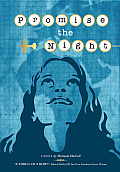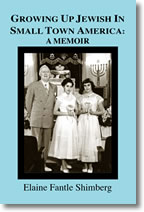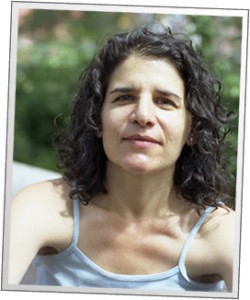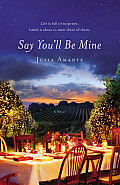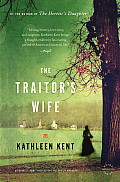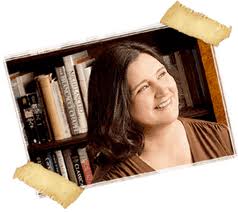 Michaela MacColl has written two novels for young readers that feature historical figures: Beryl Markham in Promise the Night and Queen Victoria in Prisoners in the Palace: How Princess Victoria Became Queen with the Help of Her Maid, a Reporter, and a Scoundrel. Recently I had a chance to ask her a few questions about Promise the Night, and here she offers us insight on how she approaches research and builds characters for her novels. (Note: Read my review of Promise the Night and enter to win a copy of that book as well as Prisoners in the Palace.)
Michaela MacColl has written two novels for young readers that feature historical figures: Beryl Markham in Promise the Night and Queen Victoria in Prisoners in the Palace: How Princess Victoria Became Queen with the Help of Her Maid, a Reporter, and a Scoundrel. Recently I had a chance to ask her a few questions about Promise the Night, and here she offers us insight on how she approaches research and builds characters for her novels. (Note: Read my review of Promise the Night and enter to win a copy of that book as well as Prisoners in the Palace.)
What did you know about Beryl Markham before you wrote Promise the Night?
MM: I knew nothing! My mother started taking flying lessons when I was in college. When she got her license, I bought her a copy of West with the Night, Markham’s wonderful memoir. It had just been reissued. 20 years later, I was looking for a new project. Mom suggested Beryl Markham. I read the memoir and was hooked within 10 pages.
What kind of research did you conduct before you started to write?
MM: All my books center on a famous person—so my process is the same at the start of each project. I find biographies, ideally more than one. Each biographer has to have a unique slant on his/her subject – so I like to note the variation. I read about the whole life. Then I concentrate on the childhood years. This is absolutely necessary when my subject is someone highly biographed, like Queen Victoria or Emily Dickinson. With Beryl – there are exactly two memoirs. The first makes her out to be a fascinating saint, the other concentrates on her flaws.
Of course, I relied on her memoir and the memoirs of other young women who grew up in the highlands above Nairobi. The best of these was Elspeth Huxley’s Flame Trees of Thika. My character Dos, is based loosely on Huxley.
Did you find it difficult to write about a real person in a fictional way?
MM: I probably should say yes, but the fact is, NO! After I’ve done my research, I find that I have a clear picture of my main character – what she cares about, what she might say and most importantly, how she will grow up. I find it much harder to flesh out the other characters.
In Promise the Night, you tell the story of Beryl’s childhood in Africa, but you insert notes about her later flight as the first person to fly solo from England to North America. Why did you decide to tell the story this way?
I wanted to write about Beryl when she was young (she’s ten when the story begins and thirteen at the end). In 1913 there weren’t any airplanes in Africa. She might have seen one during the war, but there’s no documentation for that. In her memoir, she mentions seeing a plane for the first time when she is in her 20’s.
However, kids are going to come to this book because she is a famous flyer! And her flight from the UK to North America is without doubt the most dramatic thing that she ever did. So I had to find a way to combine the two stories. I decided that her fascinating childhood was what made the flight possible. Each vignette as an adult, (deciding to fly, learning from her mistakes in the air, the preparation for her flight, etc.) relates to the chapter it precedes. For example, I paired the chapter where her father dares her to ride a wild horse with the story of how a Lord dares her to fly the Atlantic.
Beryl tells a lot of her own story in her memoir, West with the Night. How do you feel Promise the Night provides something different for readers?
MM: West With the Night offers a young reader the most tantalizing glimpses of her childhood. I took the hints and expanded them into a larger story. Hopefully it’s more satisfying. And I would be very pleased if a reader then turns to the librarian and asks for the memoir.
What fascinates you the most about Beryl?
MM: I adore her. She’s so matter-of-fact, even as she runs headlong into danger. She knows what she wants and sets out to earn it. She wasn’t afraid of hard work. And most of all, with the exception of the few people she admires, she does not care what people think of her. I’m sure she made enemies, but I think I would have been proud to be her friend.
Is there anything from the book you think makes a particularly good issue for book clubs to discuss?
MM: I think the issue of race permeates the novel. In Beryl’s mind, she is choosing between the Nandi tribe and the society of other British colonists. She is shocked when her father says the Nandi are “excellent specimens.” Another topic might be the issue of female friendships and why Beryl finds it so hard to form them.
There is a discussion guide on my website if you are interested: http://www.michaelamaccoll.com/librarians.php
Is there anything else you would like to say to readers at Mother Daughter Book Club. com?
MM: This novel was a risky one to write. Beryl Markham isn’t well-known to contemporary audiences which made it a hard sell. The shifting viewpoint between Beryl the child and Beryl the adult pilot also makes it hard to categorize the book. I’m so grateful that Chronicle Books embraced my vision. I hope you do too!

